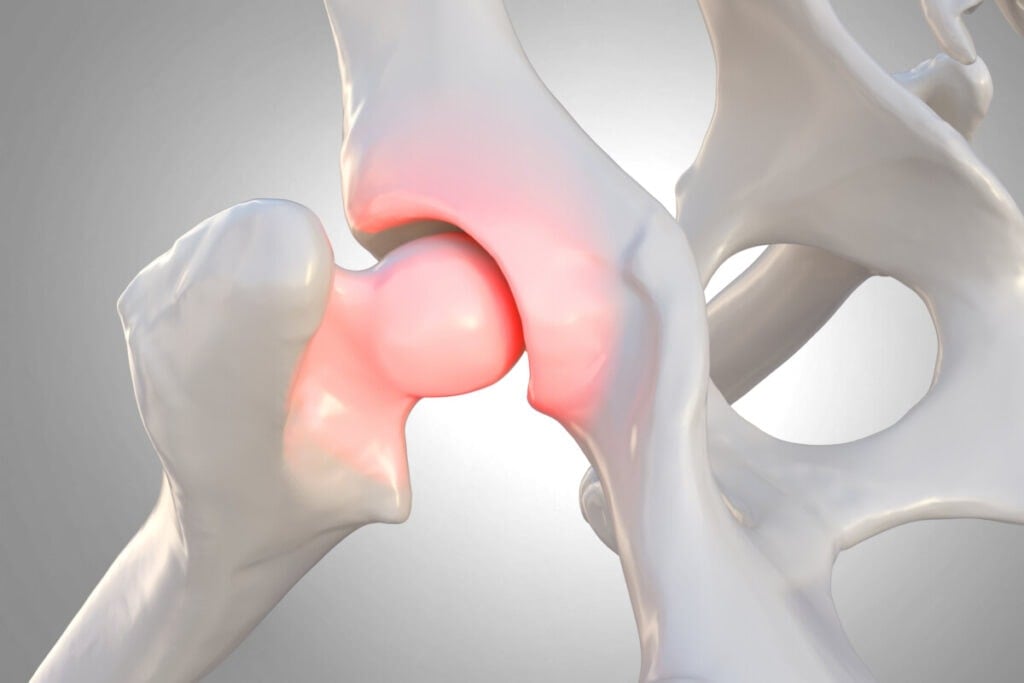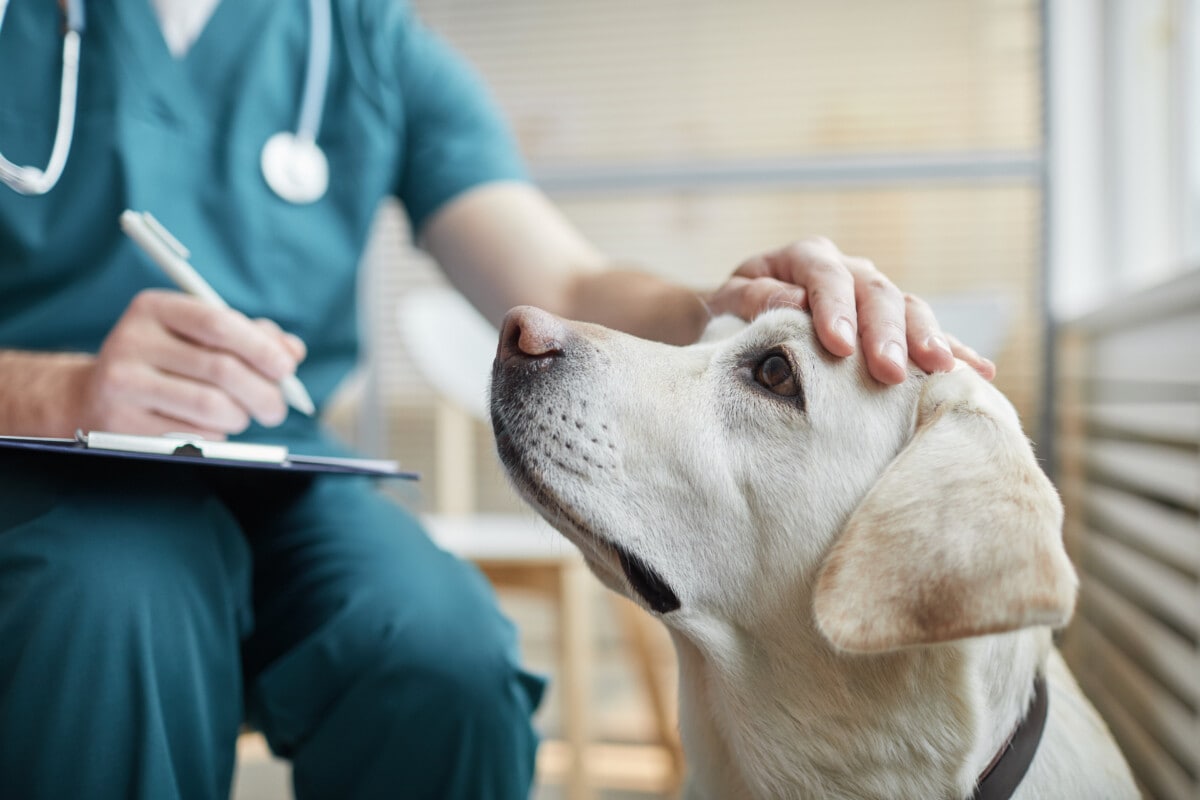What Diseases are Common in Labrador Retrievers?
Labrador Retrievers are a popular dog breed, but many dog breeds often have health issues. What diseases are Labrador Retrievers susceptible to?
Labrador retrievers are susceptible to muscular, weight, and vision-related diseases. Common health problems include hip dysplasia, diabetes, bloat, hot spots, and exercise-induced collapse. However, Labrador Retrievers are a healthy breed and most health issues can be resolved with treatments.
Labrador Retrievers are susceptible to a variety of diseases, but most of them are preventable. Included below is more information about the common diseases that are found in Labrador Retrievers.
Muscular Diseases
Labrador Retrievers have a genetic predisposition for muscular diseases. This is because they are a large breed, which means a large amount of strain gets placed on their joints and muscles.
Elbow Dysplasia
Labrador Retrievers commonly develop elbow dysplasia because they are large in size. Large dogs are at a high risk of developing this disease because of their extreme and rapid growth rate. Elbow dysplasia is when the bones in the elbow joint- the radius, ulna, and humerus- become misaligned. It can be extremely painful.
Hip dysplasia is most common in older Labrador Retrievers. However, younger ones can start to display the warning signs as well. Symptoms include a limited range of motion, limping, and lameness.
In some cases, if elbow dysplasia is left untreated it can lead to arthritis. This means that elbow dysplasia should be treated as soon as possible. It can be treated through surgery, physical therapy, joint replacement, or medication. All of these treatments are effective and will greatly reduce the amount of pain your Labrador will go through.
Hip Dysplasia
Hip dysplasia is common in larger breeds, which is why Labrador Retrievers are frequently impacted by it. Many dogs are predisposed to this condition, however, there are environmental factors that influence it as well. For instance, dogs that do not receive proper nutrition or who engage in various kinds of exercise are at higher risk for developing hip dysplasia.

If the dog is limping, has a decreased activity level, or is in obvious pain, it is a clear sign they are suffering from hip dysplasia. To treat hip dysplasia, dogs must lose weight, participate in physical therapy, or take medications to reduce inflammation.
Limber Tail
A limber tail, otherwise known as a cold water tail, is a strain in the tail due to excessive exercise. Many Labrador Retrievers experience it because of how much time they spend in the water.
Labs are known for their love of water, which means they are at a high risk of developing a limber tail. Excessive swimming is the most common cause of this muscular condition. Swimming is a common cause of this condition because of the strain that the cold temperatures put on the tail.
Signs of a limber tail are pain, limpness of the tail, and dogs licking their tails excessively. If your Labrador exhibits these signs, take them to the vet so they can be diagnosed and treated.
A limber tail can be easily treated. If your Labrador takes medications to reduce inflammation and stops swimming temporarily, the condition will eventually be resolved.
Arthritis
Arthritis is commonly caused by obesity in animals. However, it is considered to be a muscular condition. Paying attention to the nutrition and weight gain of the dog is important, particularly after being diagnosed with arthritis. Once a Labrador Retriever has arthritis, they may find it difficult to exert themselves in physical ways.
However, continued exercise is important for a dog who has arthritis, so alternative forms of exercise should be used to help your Labrador Retriever stay active.
Oftentimes, dogs with arthritis need to take medication. Prescriptions can help them to manage the pain and can even make it as to where they can participate in various exercises pain-free. Physical therapy is also a common treatment for dogs who have arthritis.
Weight Associated Diseases
It can be easy to overfeed a Labrador Retriever. However, this leads to weight diseases that can cause a great deal of harm to the overall health of your Lab.
Obesity
In the United States, 56% of dogs are considered overweight or obese, which is an alarmingly high number. This health threat poses a large risk to all dogs alike, including Labrador Retrievers. Obesity can cause further health problems, such as high blood pressure, heart disease, and diabetes.
To treat obesity, better nutrition needs to be instated. This means fewer table scraps and more foods with high nutritional value. Feed your Lab high-quality dog food, and only feed them twice per day. Limit the number of treats you give them, even if they beg.
In addition to receiving proper nutrition, labs need to be exercised frequently. Dogs that are left alone in the house all day are at an increased risk for obesity. To maintain a healthy Labrador Retriever, make sure they get at least one hour of exercise per day. If your dog is obese, take them on walks more often.
Bloat

Bloat is also known as gastric dilatation-volvulus, otherwise known as GDV. Bloat is a serious issue that should be treated immediately. Bloat occurs when the stomach fills with air and the pressure causes a deprivation of blood in the heart, which causes the dog to go into shock.
Signs of bloat include an enlarged abdomen, vomiting, and excessive salivating. Labrador Retrievers that experience bloat have to undergo surgery. 90% of dogs who have been affected by bloat develop it repeatedly throughout their lives.
This depressing statistic means that excessive precautions should be done to prevent bloat from ever occurring. A gastropexy is commonly done to prevent the condition from reoccurring, which entails connecting the stomach to the abdominal wall.
Heart Disease
Dogs that are overweight are at a higher risk of heart disease. This is just one of the many diseases that can be influenced by the weight of a Labrador Retriever. To avoid heart disease, Labs should receive adequate nutrition and exercise frequently. This way they keep their weight down and they are less likely to develop heart disease.
The five most common signs of heart disease include coughing, fainting, respiratory issues, fatigue, and changes in behavior. If a dog is experiencing any of these symptoms, it may have heart disease and should be taken to the vet as soon as possible. Changing the diet and activity levels of the Lab are the most effective forms of treatment.
Diabetes
If a dog has issues with their weight, then they are at an increased risk for diabetes. Obesity is a common risk factor of diabetes, as obese dogs are more resistant to insulin.
One of the most obvious symptoms of diabetes is unexplained weight loss. Even if dogs are eating an adequate amount of food, they may be losing weight. Labs that lose weight rapidly without cause should be tested to see if they have diabetes.
Older dogs are more at risk for diabetes. Most who are diagnosed are at least five years old. However, it can occur at any age. In addition, unspayed female dogs almost always develop diabetes late in life.
Diet, exercise, and insulin are required to treat diabetes. Improving the diet and physical health of your Lab will help to reduce the impacts of diabetes. In addition, insulin shots should be used as recommended by the vet.
Vision Diseases

Labrador Retrievers are susceptible to a few vision diseases. However, these diseases do not typically impact the longevity of the life of your dog.
Progressive Retinal Atrophy
Progressive retinal atrophy is characterized by gradual blindness. Labrador Retrievers commonly develop this disease because it is inherited through genetics, and many Labrador Retrievers have the genetic markings of this disease. If an owner thinks their dog has progressive retinal atrophy, a diagnosis needs to be made by a veterinary ophthalmologist, as these specialists are the only ones qualified to give the diagnosis.
Unfortunately, there is currently no way to cure progressive retinal atrophy. However, there are methods of helping a Labrador Retriever cope with blindness. In addition, because the loss of eyesight is gradual, the dog will be able to adapt easier than if they lost all eyesight at once.
Entropion
Entropion is an inherited disorder that causes the eyelids to roll inwards. This can cause a Labrador Retriever to be in pain or severe discomfort. However, some dogs may not be in any discomfort at all. Many affected dogs will try and keep their eye shut to avoid using it or they may have mucoid discharge.
Labrador Retrievers are commonly known to have entropion. Because it is an inherited disease, Labs that have it should not be used to breed. Those who have this disorder typically undergo surgery. A surgical procedure is done to remove a piece of skin and correct the lid from rolling inward. In many cases, more than one procedure will be done during the dog’s lifetime.
Other Common Diseases
Although muscular, weight, and vision diseases have been mentioned, there are others to be aware of as well. These diseases include neurological and skin disorders.
Hot Spots
Hot spots are inflamed and bacterial infected sections of the skin. Because of their thick fur, Labrador Retrievers have a genetic predisposition to hot spots. In addition, their love for the water puts them at a higher risk because hot spots are more common in wet, moist, and humid conditions.
There is typically an underlying reason for hot spots to occur as they do not commonly develop on their own. The root reason for the spots should be identified as soon as possible, to prevent them from worsening. Hot spots spread easily and get worse with time, which is why owners should not leave this condition untreated. In addition, the spots will not go away on their own and a visit to the veterinarian must occur.
Hot spots are easy to identify. They are typically red and filled with pus. Affected dogs will commonly be seen scratching at the area, even though this makes it worse. Hot spots are extremely itchy and oftentimes painful for the dog, which may cause them to lick and further worsen the condition.
Epilepsy

The most common neurological disorder in canines is epilepsy. Epilepsy is characterized by unwarranted seizures, due to an abnormality in the brain.
Many owners fear epilepsy, particularly when it is undiagnosed, as they do not know why their Labrador Retriever is having unexplainable seizures. Regular seizures can be alarming, however, there are effective treatments available for epilepsy.
Anti-epileptic drugs are commonly used for dogs who have been diagnosed with epilepsy.
However, this type of treatment has many possible side effects, which means owners should use these drugs with caution.
Laryngeal Paralysis
Laryngeal paralysis is when the Labrador Retriever’s vocal folds cannot open after physical exertion. Dogs that have laryngeal paralysis typically breathe loudly, do not enjoy exercise, and cough an abnormal amount. Many dogs do not display these signs when inactive, however, once they begin to move, the symptoms occur. In addition, this disease develops gradually, meaning the symptoms can be easily overlooked.
Most Labrador Retrievers who experience this disease are elderly. Because of their old age, abnormal breathing during exercise may seem normal. However, if there are any concerns that the unusual breathing pattern may be due to laryngeal paralysis, take the dog to the vet immediately. This way, respiratory distress can be avoided.
Exercise-Induced Collapse
An exercise-induced collapse can occur after just five minutes of intense exercise. Some dogs collapse every time they exercise, while others only do occasionally. After the collapse, dogs typically recover within 20 minutes with seemingly no side effects. This leaves owners bewildered, as dogs recover quickly and act as though the collapse never happened.
Exercise-induced collapsing was first discovered in Labrador Retrievers. Labs of all colors and genders are affected, but most are diagnosed at 14 months. Even seemingly healthy labs can have this condition, and 3%-13% of Labs are affected.
Dogs who collapse from exercise should avoid strenuous activities. They can continue to live healthy lives as long as they avoid intense physical exercise.






